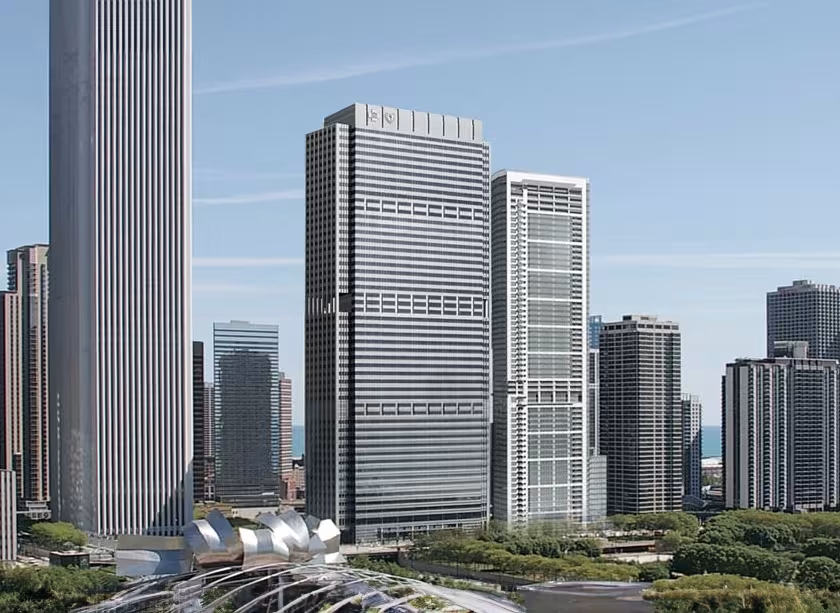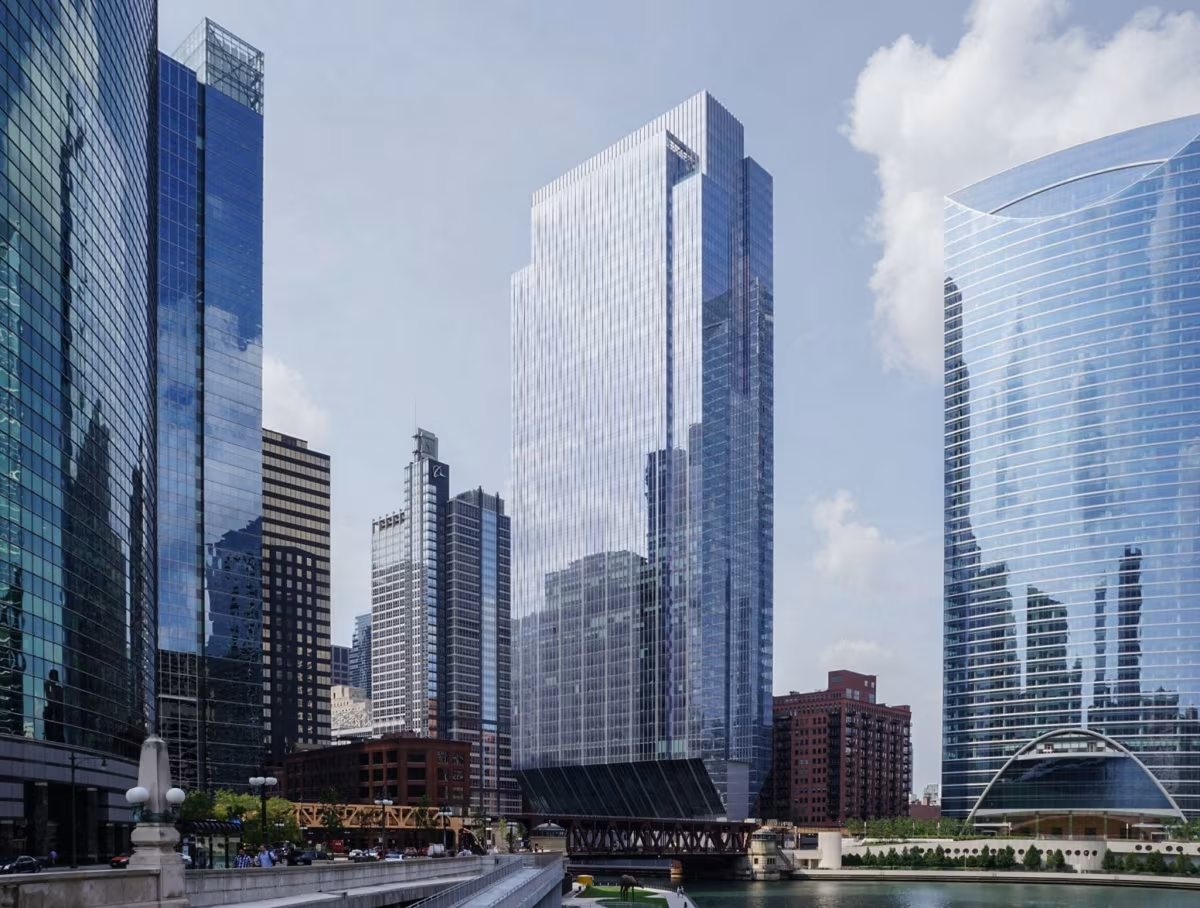Blue Cross Blue Shield Tower vs 150 North Riverside Building


Comparing the Blue Cross Blue Shield Tower and the 150 North Riverside Building is particularly interesting because they share the same skyline in Chicago, IL, and were both designed by Goettsch Partners. However, they were completed more than 20 years apart.
This offers a unique perspective on how the architect's style and the city's architecture evolved over time.
Height & Size
Architectural Style
Both the Blue Cross Blue Shield Tower and the 150 North Riverside Building were designed in line with the aesthetic conventions of the Contemporary style.
Back then, theContemporary was still an emerging movement, so both giving it a pioneering role. By contrast, the 150 North Riverside Building came later, when the style was already more established.
Uses
Both the Blue Cross Blue Shield Tower and the 150 North Riverside Building were designed to serve as commercial towers, and that has remained their main use since their completion, serving similar roles in the urban fabric.
Both towers provide significant parking capacity, with Blue Cross Blue Shield Tower offering 5226 spaces and the 150 North Riverside Building offering 72.
Structure & Facade
The two towers rely on different structural systems, reflecting distinct engineering strategies.
The Blue Cross Blue Shield Tower uses a Frame structural system, which relies on a regular grid of columns and beams to sustain its weight, while the 150 North Riverside Building uses a Framed Tube In Tube system, that combines a strong central core with a perimeter tube of columns.
Yet, when it comes to their facade, they both employed the same solution, a Curtain Wall facade.
A curtain wall is a non-load-bearing facade hung from the structural frame. It is anchored to floor slabs and transfers only its own weight and wind loads, allowing for sleek, glassy exteriors.
| Blue Cross Blue Shield Tower | 150 North Riverside Building | |
|---|---|---|
| Goettsch Partners | Architect | Goettsch Partners |
| 1995 | Construction Started | 2014 |
| 1997 | Year Completed | 2017 |
| Contemporary | Architectural Style | Contemporary |
| Commercial | Current Use | Commercial |
| 54 | Floors Above Ground | 54 |
| 3 | Floors Below Ground | 1 |
| 208 | Last Floor Height | 204 |
| 227 m | Height (m) | 221 m |
| 213,676 m² | Usable Area (m²) | 1,226,111 m² |
| 36 | Number of Elevators | 22 |
| Frame | Structure Type | Framed Tube In Tube |
| Steel | Vertical Structure Material | Steel And Concrete |
| Concrete | Horizontal Structure Material | Concrete |
| No | Facade Structural? | No |
| Glass, Granite, Led Lights | Main Facade Material | Glass |
| Walsh Construction Co | Main Contractor | Clark Construction |
| Health Care Service Corporation (HCSC) | Developer | Riverside Investment & Development |
| Mitsubishi Electric & Electronic | Elevator Company | Schindler |
| Cosentini Associates | MEP Engineer | Cosentini Associates |
| Magnusson Klemencic Associates | Structural Engineer | Magnusson Klemencic Associates |
| Permasteelisa Group | Facade Consultant | Permasteelisa Group |
| IL | State | IL |
| Chicago | City | Chicago |
| 300 E. Randolph St. | Address | 150 North Riverside Plaza |